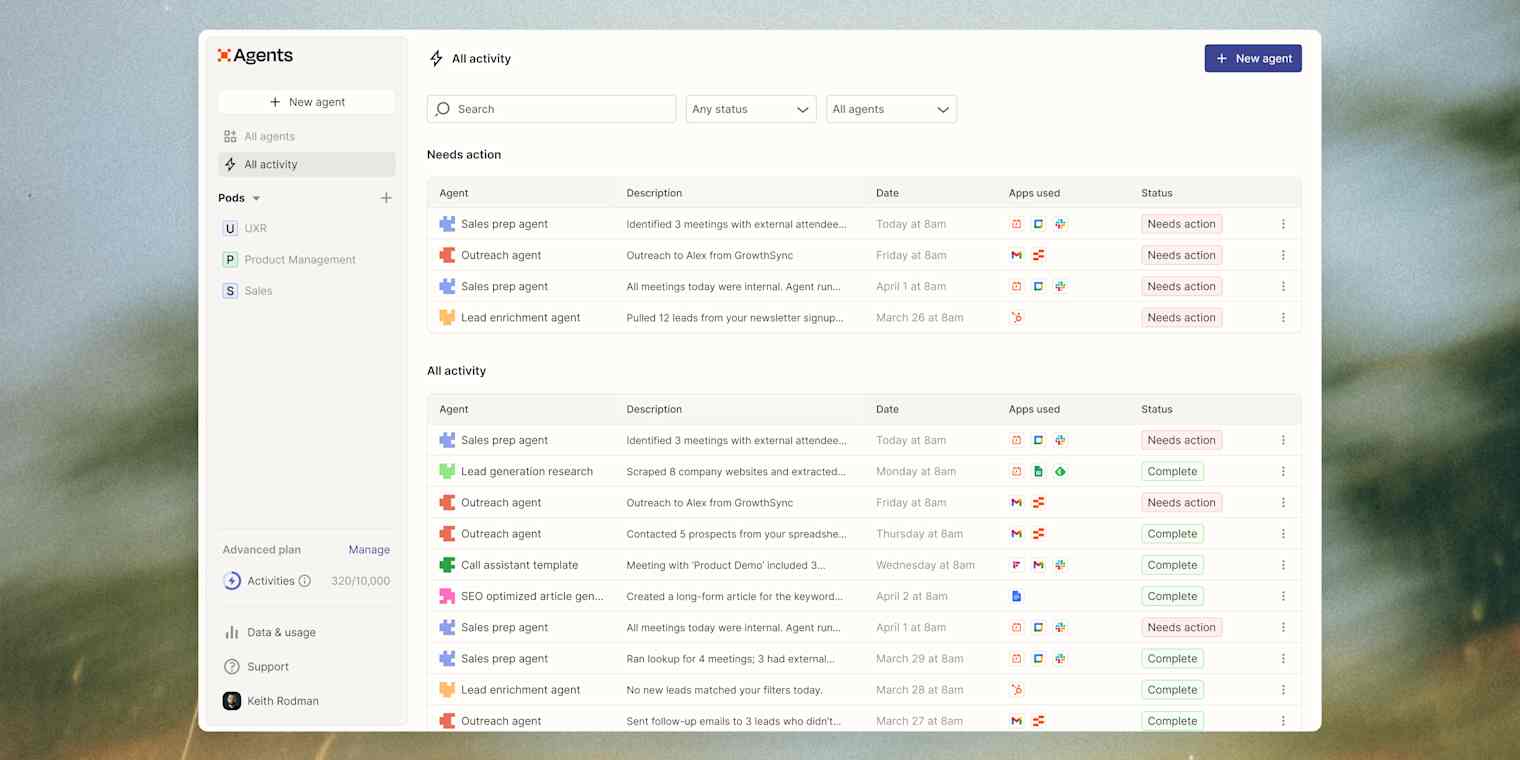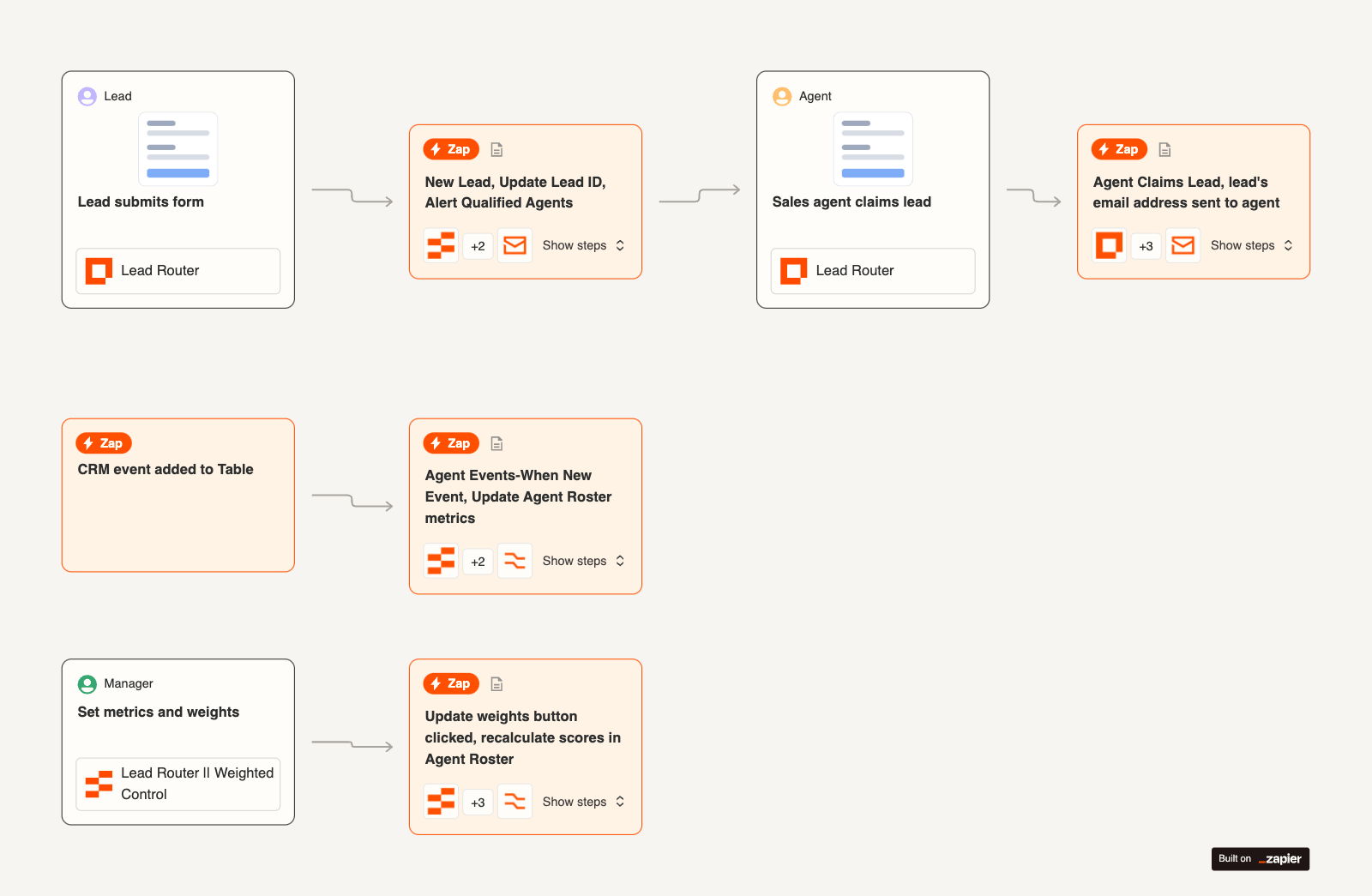Zapier AI Review: Workflow Automation with AI Features
.png)
The relentless pace of digital transformation has made workflow automation an indispensable strategy for modern businesses. By connecting disparate applications and automating repetitive tasks, companies can unlock significant gains in productivity and efficiency. For years, Zapier has been the undisputed leader in this space, creating a simple yet powerful platform for connecting thousands of apps. Now, with the introduction of Zapier AI, the company is redefining the boundaries of automation, infusing its powerful platform with a new layer of intelligence. This review provides an in-depth analysis of Zapier AI, exploring its core features, its impact on business process automation, and how it stacks up against the competition.
The Evolution of Automation: From Zaps to AI-Powered Workflows
Traditional workflow automation platforms, including the classic version of Zapier, operate on a simple but effective trigger-and-action model. An event in one application (the trigger) initiates a predefined task in another (the action). This has been incredibly effective for linear, repetitive processes. However, as business needs have grown more complex, the demand for more dynamic, intelligent, and adaptive automation has surged. This is where AI integration becomes a game-changer.
Zapier AI represents a fundamental evolution of this model. Instead of just executing predefined steps, it leverages artificial intelligence to understand intent, process unstructured data, and make decisions within a workflow. This shift moves the platform beyond simple task automation into the realm of genuine process optimization, where workflows can adapt to changing conditions and handle a much wider range of complex scenarios. This evolution is crucial for any organization looking to stay competitive, especially in fields that rely heavily on data analytics and real-time decision-making.
Core Features of Zapier AI: A Deep Dive

Zapier AI is not a single product but a suite of AI-powered features woven into the fabric of the Zapier platform. These tools work in concert to create sophisticated, multi-app workflows that were previously impossible without custom code or significant manual intervention.
AI-enhanced data storage and app-building tools that allow users to create custom front-ends for their automated workflows.
Creates a unified system for data collection, process optimization, and interaction within a single platform.
These features collectively transform Zapier from a simple connector of apps into a comprehensive platform for building AI-powered workflows. The implications for businesses are profound, enabling a level of automation that can drive significant improvements in efficiency and decision-making, touching everything from project management to digital marketing.
Zapier Agents: The Future of Autonomous Work
The most forward-looking component of the Zapier AI suite is undoubtedly Zapier Agents. Unlike traditional Zaps, which follow a rigid, predefined path, Agents are designed to be autonomous. A user can provide an Agent with a high-level objective, such as "For every new high-value lead, research the company, find the key decision-maker on LinkedIn, and draft a personalized outreach email." The Agent will then independently determine the best sequence of actions to achieve this goal.
This capability represents a paradigm shift in workflow automation. It allows for the automation of tasks that require decision-making and context-switching, activities that have historically been the exclusive domain of human workers. For businesses, this opens up new frontiers for efficiency. For example, in software development, an Agent could be tasked with triaging bug reports, gathering relevant logs from different systems, and assigning the ticket to the appropriate developer based on the bug's characteristics. This level of intelligent task automation frees up valuable human resources to focus on more strategic initiatives.
Competitive Landscape: How Does Zapier AI Compare?

While Zapier was a pioneer in the automation space, the market for automation tools has become increasingly crowded. Several Zapier alternatives now offer robust platforms, many with their own AI capabilities. Understanding how Zapier AI positions itself in this competitive landscape is crucial for making an informed decision.
Deeply integrated into the Microsoft 365 and Azure ecosystems, making it a natural choice for organizations heavily invested in Microsoft products.
Businesses operating within the Microsoft ecosystem, leveraging its seamless integration with tools like Teams and SharePoint.
Zapier's primary competitive advantage remains its unparalleled library of over 7,000 app integrations and its user-friendly interface. The addition of Zapier AI further strengthens this position by making sophisticated AI integration accessible to a broad audience without requiring deep technical expertise. While some Zapier alternatives may offer more power or flexibility in specific areas, none can match Zapier's combination of simplicity, connectivity, and now, accessible AI.
Real-World Applications and Business Impact

The true value of any technology lies in its practical application. AI-powered workflows built with Zapier are already transforming business process automation across various industries and departments.
Enhancing Digital Marketing and Sales
In digital marketing, Zapier AI can be used to create highly personalized campaigns at scale. For example, an AI-powered workflow could analyze the content of a new lead's form submission, use that information to generate a personalized follow-up email, and add the lead to a specific nurturing sequence in a customer relationship management (CRM) system. This level of personalization, executed automatically, can dramatically improve conversion rates. Sales teams can use Agents to automate lead research, freeing up their time to focus on building relationships and closing deals.
Streamlining Operations and Project Management
For operations and project management, AI-powered workflows can automate everything from resource allocation to progress reporting. An Agent could monitor project management tools for overdue tasks, send intelligent reminders to team members, and generate a summary report for stakeholders. This not only saves time but also improves project visibility and accountability. By integrating with various enterprise software solutions, Zapier ensures that these automations can span the entire organizational stack.
Leveraging Business Intelligence and Data Analytics
The ability of Zapier AI to process and classify unstructured data opens up new possibilities for business intelligence. A workflow could be designed to monitor social media mentions, use AI to perform sentiment analysis, and log the results in a database for further data analytics. This provides companies with a real-time pulse on customer sentiment, enabling them to respond more quickly to issues and opportunities. This capability is especially powerful when combined with the scalability of cloud computing platforms, allowing for the analysis of massive data volumes.
Navigating the Broader Tech Ecosystem
The impact of a platform like Zapier AI extends beyond its immediate use cases. It is part of a larger trend of embedding AI into the core of business operations, influencing everything from IT infrastructure decisions to cybersecurity protocols. As more critical business processes become automated, ensuring the security and reliability of these multi-app workflows becomes paramount. Organizations must consider the cybersecurity implications of granting an automation platform access to their various systems and data.
Furthermore, the rise of accessible automation tools is changing the nature of work itself. As routine tasks are increasingly handled by AI, the value of human employees shifts towards more strategic, creative, and interpersonal activities. This requires a new focus on upskilling and reskilling the workforce to thrive in an AI-driven economy. The ease of use of Zapier AI can be a valuable asset in this transition, allowing employees at all levels to become citizen automators who can identify and implement opportunities for process optimization within their own departments.
A Deeper Look at Zapier AI's Core Components
To fully appreciate the power of Zapier AI, it's essential to examine each of its core components in detail. These tools are designed to be used both independently and in concert, creating a flexible and powerful platform for building sophisticated AI-powered workflows.
The AI-Powered Zap Builder: Automation Through Conversation
The AI-powered builder is perhaps the most significant step forward in making workflow automation accessible to everyone. Instead of requiring users to manually select triggers and actions, it allows them to simply describe their desired workflow in plain English. For example, a user could type, "When a new row is added to my Google Sheet, translate the text in column B to Spanish and save it in column C." The AI builder will then parse this request and construct the corresponding Zap, complete with the correct app integrations and field mappings. This feature dramatically reduces the learning curve and empowers subject matter experts who understand the business process but may not be familiar with the intricacies of automation platforms.
Zapier Agents: Delegating Complex Objectives to AI
Zapier Agents represent the cutting edge of Zapier AI, moving beyond simple task execution to autonomous problem-solving. An Agent can be given a high-level goal and a set of available tools (app integrations), and it will independently devise and execute a plan to achieve that goal. This is particularly powerful for processes that require research, data aggregation, and decision-making.
Consider a digital marketing manager who needs to compile a weekly performance report. They could instruct an Agent: "Every Friday, gather the key performance metrics from Google Analytics, Facebook Ads, and our Mailchimp campaign. Analyze the trends, write a summary of the week's performance, and post it to our internal Slack channel." The Agent would then handle the entire process, from authenticating with each service to generating the final summary. This level of autonomy makes Agents one of the most powerful automation tools available for complex, recurring tasks.
AI by Zapier: Injecting Intelligence into Any Workflow

The "AI by Zapier" step is a versatile tool that allows you to add a specific AI action anywhere within a Zap. This provides a more granular approach to AI integration than the autonomous nature of Agents. Common use cases include:
•Text Summarization: Condensing long articles or email threads into concise summaries.
•Data Classification: Automatically categorizing customer feedback or support tickets based on their content.
•Content Generation: Drafting social media posts, product descriptions, or email responses.
•Sentiment Analysis: Determining the emotional tone of a piece of text, which is invaluable for customer relationship management.
This tool acts as a bridge, allowing traditional, rule-based automations to benefit from the power of AI for specific, well-defined tasks, leading to more effective process optimization.
AI-Powered Chatbots: Your 24/7 Frontline Support
Zapier's Chatbots feature allows businesses to build and deploy AI-powered conversational agents on their websites. These chatbots can be trained on a company's knowledge base, documentation, and other content, enabling them to provide instant, accurate answers to customer queries. This not only improves the customer experience but also frees up human support agents to handle more complex issues. The chatbots can be integrated into Zaps, allowing them to perform actions like creating a support ticket, adding a user to a mailing list, or escalating a conversation to a human agent, making them a powerful tool for business process automation.
Tables and Interfaces: Creating a Unified Command Center
Zapier Tables and Interfaces are the final pieces of the puzzle, allowing users to store data and create custom web applications on top of their automated workflows. Tables acts as a simple, AI-enhanced database within Zapier, while Interfaces lets you build forms, dashboards, and other interactive elements. When combined with Zapier AI, this ecosystem becomes a powerful platform for building end-to-end solutions. For example, a company could use an Interface to create a custom form for internal bug reporting. When an employee submits the form, the data is saved to a Table, and a Zapier Agent is triggered to begin the software development triage process. This creates a seamless, self-contained system for managing a critical business function.
Zapier AI vs. Traditional Zapier: An Evolutionary Leap
For those familiar with the classic Zapier experience, understanding the distinction between traditional Zaps and AI-powered workflows is key. The fundamental difference lies in the shift from deterministic to probabilistic automation.
Aspect
Traditional Zapier
Zapier AI
Logic
Rule-based and deterministic (If X, then do Y).
Goal-based and probabilistic (Achieve X, using the best available path).
Data Handling
Primarily handles structured data.
Excels at processing unstructured data (text, images, etc.).
Flexibility
Workflows are rigid and follow a predefined path.
Workflows can be dynamic and adaptive, with AI making decisions in real-time.
User Experience
Requires users to manually build workflows step-by-step.
Allows users to build workflows using natural language prompts.
This evolution does not make traditional Zaps obsolete. On the contrary, they remain the ideal solution for simple, linear tasks. The power of the new platform lies in its ability to combine both approaches. A user can have a simple, rule-based trigger that initiates a complex, AI-powered workflow handled by a Zapier Agent, getting the best of both worlds.
Pricing and Plans: What Does Zapier AI Cost?

Zapier's pricing has traditionally been based on the number of tasks and the update time of Zaps. The introduction of Zapier AI adds a new dimension to this model. While some basic AI features are available on lower-tier plans, the more advanced capabilities, particularly the heavy use of Zapier Agents and premium AI actions, require higher-tier subscriptions and may consume tasks at a different rate or have separate usage-based billing. As of late 2025, the pricing structure is designed to be modular, allowing users to pay for the specific AI features they need. This can be cost-effective for businesses with specific needs but can also become complex for organizations leveraging the full suite of automation tools. It is crucial for potential users to carefully evaluate their expected usage against the various plan tiers to find the most economical option.
Practical Implementation and Getting Started
Adopting Zapier AI can be a phased process. Here are some steps for getting started:
1.Start Small: Begin by identifying a few simple, repetitive tasks that involve unstructured data, such as summarizing meeting notes or categorizing emails. Use the AI by Zapier step to automate these tasks.
2.Explore the AI Builder: Experiment with the natural language builder to create a few multi-app workflows. This will help you understand how the AI interprets instructions and constructs Zaps.
3.Deploy a Chatbot: If you have a customer-facing website, consider building a simple chatbot to answer frequently asked questions. This can provide a quick and measurable return on investment.
4.Experiment with Agents: Once you are comfortable with the basics, identify a more complex, multi-step process that could be handed off to a Zapier Agent. Start with a well-defined, non-critical task to test the Agent's capabilities.
By gradually integrating these AI-powered workflows, organizations can build confidence and expertise, paving the way for more ambitious business process automation initiatives.
Frequently Asked Questions (FAQ)
Q: Is Zapier AI difficult to learn? A: No, one of the primary design goals of Zapier AI is accessibility. Features like the AI-powered builder allow users to create complex automations using natural language, significantly lowering the technical barrier to entry.
Q: Can Zapier AI completely replace human employees? A: No. Zapier AI is designed to augment human capabilities, not replace them. It excels at handling repetitive, data-driven tasks, which frees up human employees to focus on strategic thinking, creativity, and complex problem-solving.
Q: How does Zapier AI handle data privacy and security? A: Zapier has robust security protocols in place. However, when using AI integration, especially with third-party models, it is crucial to understand the data handling policies of each service. For sensitive data, leveraging enterprise software with strong security guarantees or exploring self-hosted Zapier alternatives like n8n.io might be necessary. As with any cloud computing service, robust cybersecurity practices are essential.
Q: What are the best Zapier alternatives for AI automation? A: The best Zapier alternatives depend on your specific needs. Make is a strong contender for its visual builder and flexible pricing. Workato is excellent for large enterprises needing robust governance. n8n.io is a great open-source option for those who want to self-host and have maximum control.
Conclusion: The New Frontier of Intelligent Automation
Zapier AI is more than just an incremental update to a popular tool; it is a bold step into the future of intelligent workflow automation. By seamlessly blending its market-leading connectivity with a powerful and accessible suite of AI features, Zapier has created a platform that empowers businesses to automate not just tasks, but entire processes. From the natural language Zap builder to the autonomous capabilities of Zapier Agents, these tools are designed to unlock new levels of productivity and innovation.
While the market for Zapier alternatives is robust, Zapier's focus on user-friendliness, combined with the sheer breadth of its app ecosystem and the power of its new AI integration features, solidifies its position as a leader in the field. For any organization looking to harness the power of AI to streamline operations, enhance customer relationship management, and drive meaningful business process automation, Zapier AI represents a compelling and powerful solution that is poised to shape the future of work.
